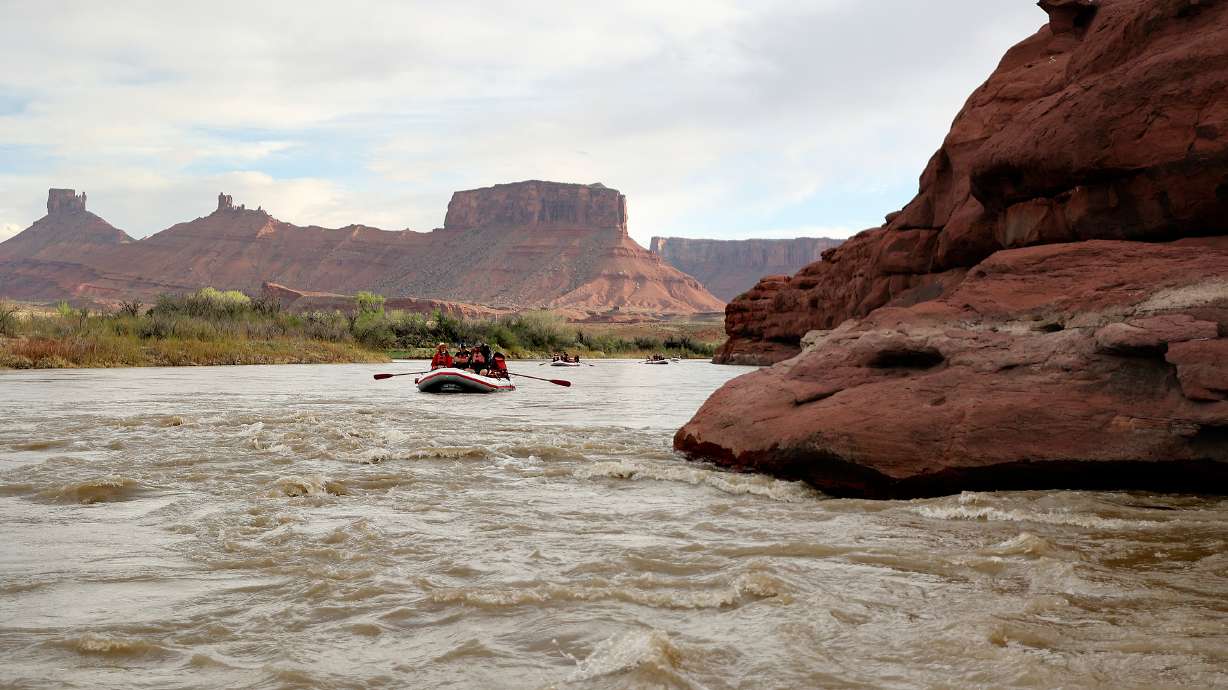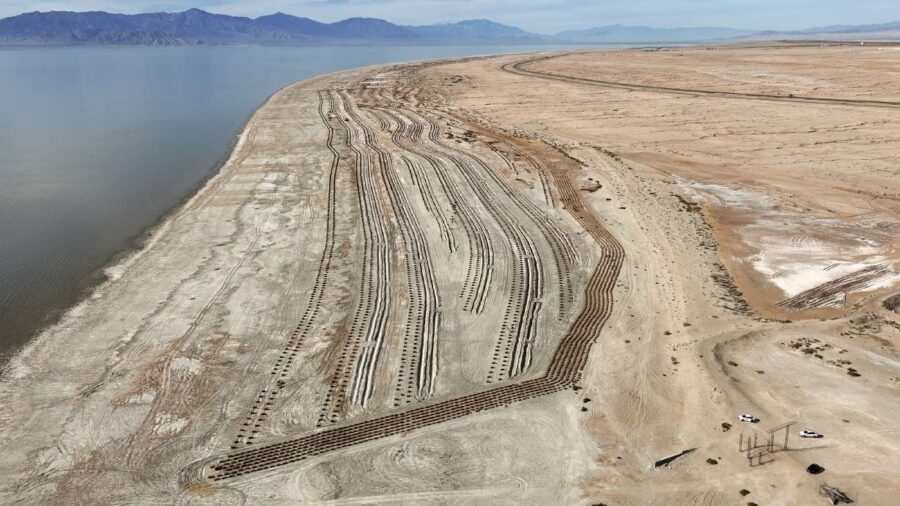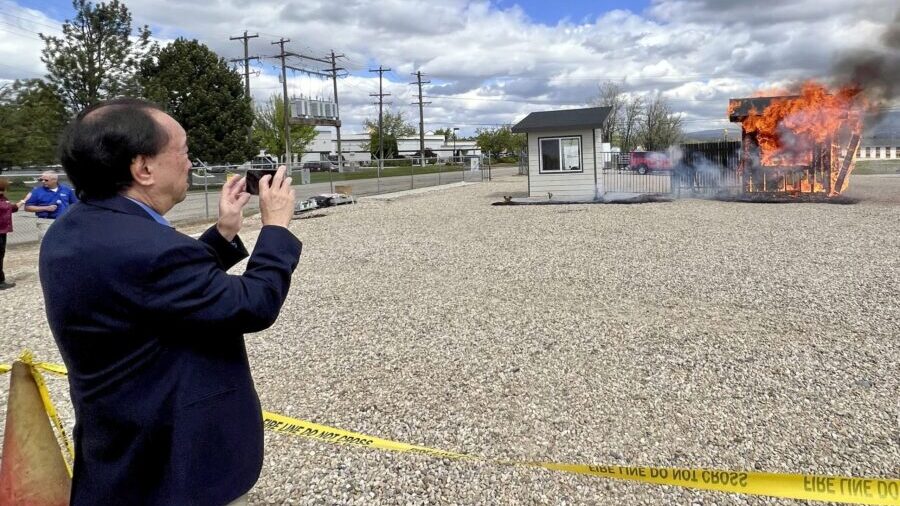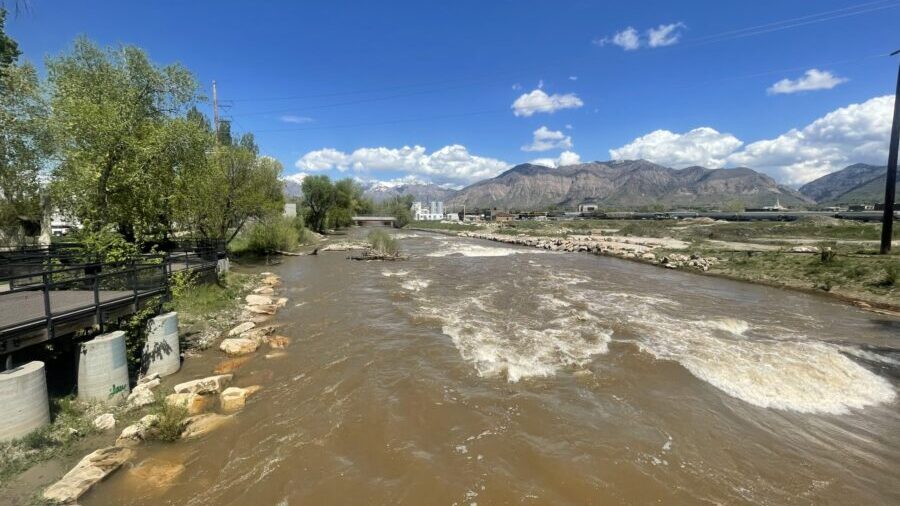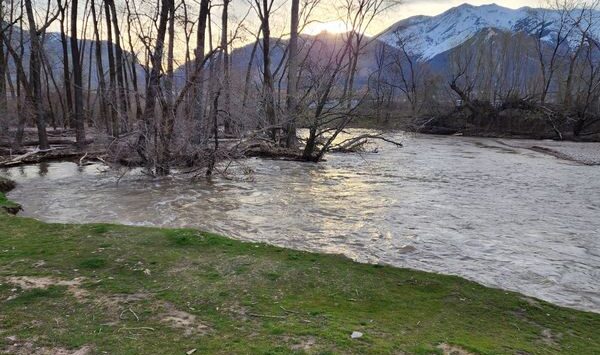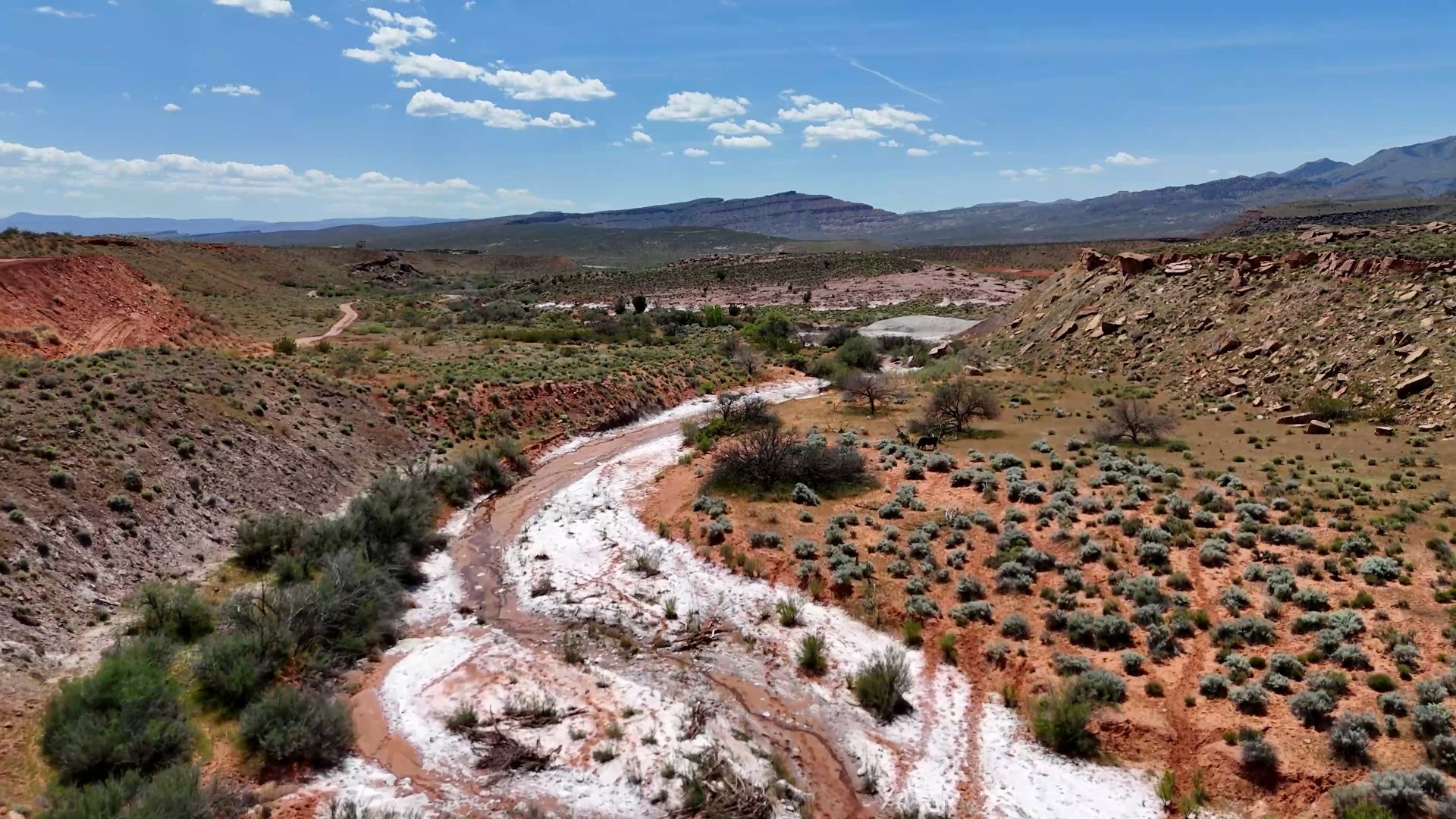Feds adopt emergency Colorado River plan that aims to save Lake Powell and Lake Mead
Mar 6, 2024, 3:36 PM
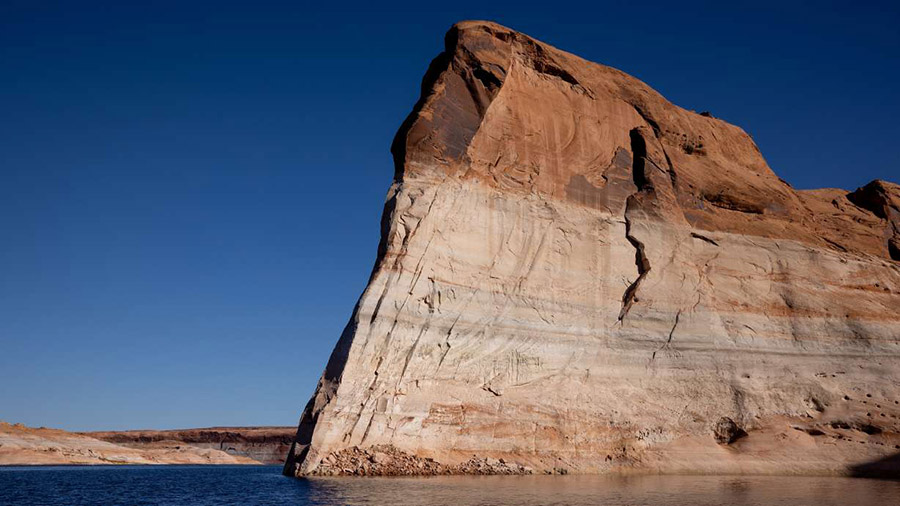
Lake Powell’s “bathtub ring”, a light-colored coating of mineral deposits left during periods of higher water on the reservoir, is seen on canyon walls on Oct. 6, 2022, near Bullfrong. (Spenser Heaps, Deseret News)
(Spenser Heaps, Deseret News)
SALT LAKE CITY — Federal officials are enacting a “significant” emergency Colorado River plan they believe will reduce water consumption by at least 3 million acre-feet over the next few years.
Department of Interior and Bureau of Reclamation officials on Tuesday released a final impact statement tied to a near-term plan addressing operations at Glen Canyon and Hoover dams between now and the end of 2026, which is the end of the existing Colorado River Basin agreement.
It almost finalizes the deal all of the Colorado River Basin entities, including Utah, agreed to in October, with the Lower Basin states of Arizona, California and Nevada reducing their use of the river during that time. In exchange, the states will receive over $1 billion from federal funds dedicated to climate impacts.
The agencies also announced new agreements with three California water districts that are expected to save about 400,000 acre-feet on top of what the states had agreed on, for nearly $160 million in additional funds. Lake Powell, by the Utah-Arizona border, and Lake Mead are projected to be able to hold more water with all of the deals in place.
“(This) is a really big deal,” said Laura Daniel-Davis, acting deputy secretary of the Interior, in a call with reporters.
A short-term solution
More than 40 million people rely on the Colorado River for water in the West, including many Utahns. More than half of all Utahns are directly benefited by the river, according to the Utah Division of Water Resources.
But the river — like many Utah bodies of water — has struggled through the West’s megadrought. Federal agencies started reviewing options to reduce water consumption within the basin after Lake Powell and Lake Mead — the nation’s two largest reservoirs — each fell to levels that threatened dam functions, including producing electricity for nearby communities amid a severe drought that impacted the West.
Their conditions sparked conversations about how to reduce water consumption to stop both reservoirs from reaching critically low levels before the next water agreement begins in 2027.
Both reservoirs received a boost from the region’s robust snowpack runoff last spring; however, federal officials noted both remain at risk. Lake Powell is currently a little more than 3,561 feet elevation, about one-third of full capacity, but possibly in line for another recharge with the region’s snowpack conditions. Lake Mead is in a slightly better situation, at about 37% of capacity.
That’s where the agreement comes into play. Utah Gov. Spencer Cox called the states’ plan to save about 3 million acre-feet through cuts to the Lower Basin states a “win for everybody” when the states submitted the plan to the federal government in May 2023.
Federal officials agree. Camille Calimlim Touton, commissioner of the United States Bureau of Reclamation, said Tuesday the “significant milestone” is expected to ensure neither reservoir falls to “critically low” levels before the 2027 Colorado River agreement is completed.
“This historic agreement has given us the breathing room to focus on the long-term,” she said.
Touton is also optimistic about the upcoming spring snowmelt, which may provide an additional bump to both reservoirs this spring. Both precipitation and snowpack levels across the basin are near the region’s median average with about a month left in the snowpack collection process.
A long-term solution
Meanwhile, work on a new 2027 agreement is beginning to pick up. The Department of Interior is scheduled to begin work on an environmental impact statement on the 2027 plan this year; a draft is projected to be released to the public by the end of the year, according to Daniel-Davis.
She explained the agency will go through another lengthy process that draws in feedback from all the people who rely on the Colorado River, from states to tribal nations. The ultimate goal is to avoid the same “dire circumstances” that prompted emergency actions now being implemented, which may be complicated by the differences between the states using the river’s water.
The U.S. will also work with Mexico — another water rights holder — in these discussions, said Michael Brain, the Interior’s principal deputy assistant secretary for water and science.
“We are not expecting every single issue to be smoothed out between the Upper and Lower Basins tomorrow, but … we are all committed to a basin-wide solution, and we’ll continue to work collaboratively through any major sticking points until a consensus has been reached,” Daniel-Davis said. “There is no doubt that it will take all of us to get this right. … Failure is not an option.”


